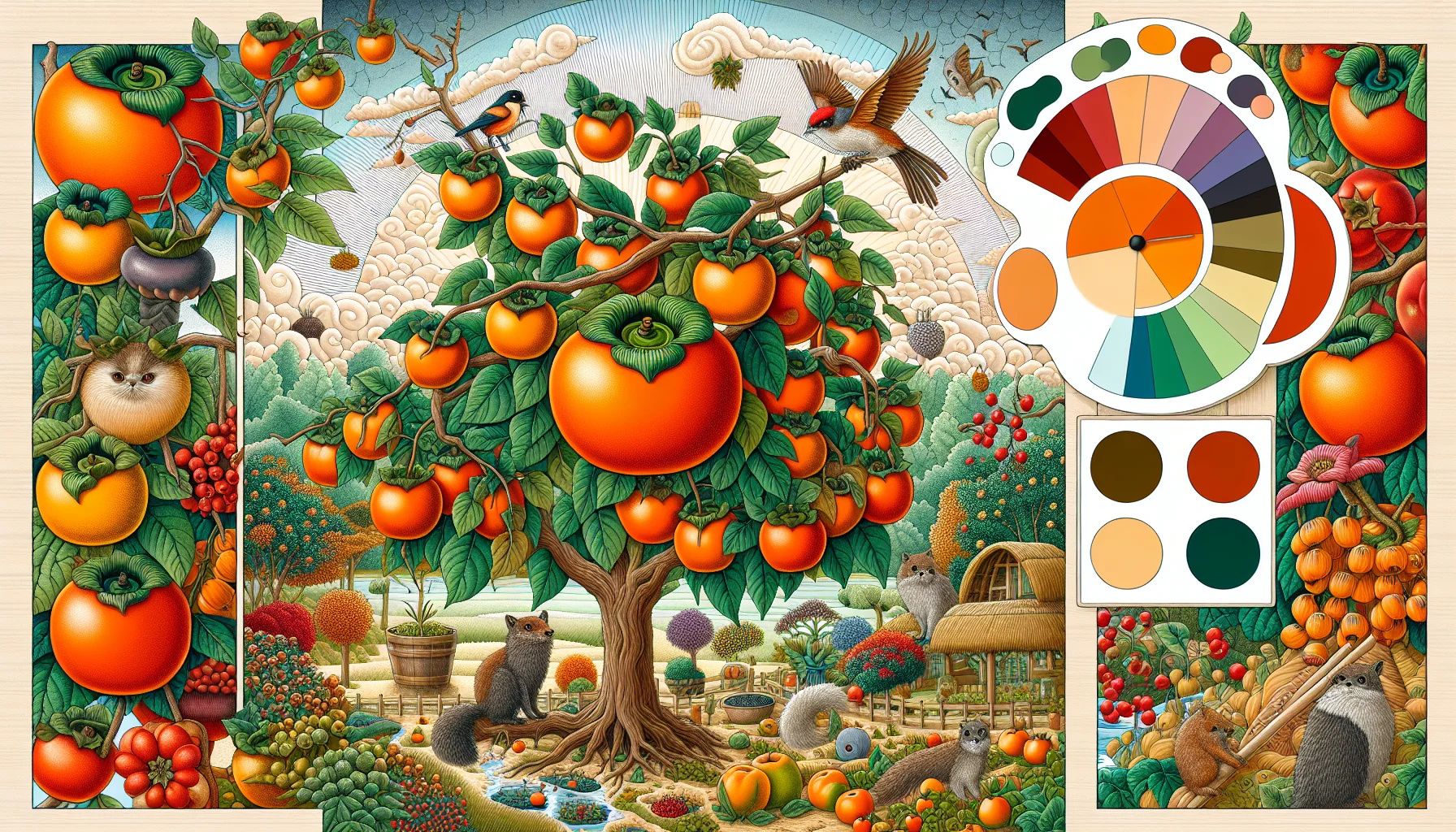When is persimmon ripe Quiz
Test Your Knowledge
Question of
When Is Persimmon Ripe?
Knowing the right time to harvest persimmons is crucial in gardening to ensure the fruit reaches its full flavor potential. Harvesting too early can lead to astringent and hard fruit, while waiting too long may result in over-ripeness, making the persimmons mushy and less appealing. Timing the harvest correctly allows the fruit to develop its sweet, rich flavor fully, making it a delightful addition to any gardener's fruit collection.
Types of Persimmons
Persimmons are a delicious and versatile fruit that come in many varieties, broadly categorized into two main types: astringent and non-astringent. Astringent persimmons contain high levels of tannins and are usually too bitter to eat until they are fully ripe and soft. Non-astringent persimmons, on the other hand, are sweeter and can be eaten while still firm. Both types offer a unique taste and texture, making persimmons a favorite for many.
Astringent Persimmons
- Hachiya: This is one of the most common astringent varieties, known for its acorn shape. It needs to be fully ripe and soft before eating.
- Tanenashi: A cone-shaped, seedless variety that is often used in baking.
Non-Astringent Persimmons
- Fuyu: Crisp and sweet, Fuyu persimmons can be eaten while still firm, similar to an apple.
- Jiro: Similar to the Fuyu, this variety is also sweet and can be consumed when firm.
Signs of Ripeness in Persimmons
Identifying a ripe persimmon involves paying attention to its color and feel. A ripe persimmon will exhibit a deep orange hue, a noticeable shift from the lighter, more yellow-orange color of its unripe state. This color change is a reliable indicator that the fruit has reached its peak sweetness. In addition to the visual cue, ripe persimmons will yield slightly to gentle pressure, indicating their flesh has softened and is ready to eat. However, it's important to handle them carefully to avoid bruising. These tactile and visual signs will help you select the perfect persimmon for consumption.
How to Ripen Persimmons
To ripen persimmons at home, one popular method involves the use of paper bags. Simply place the persimmons inside a paper bag and loosely close it. The bag traps ethylene gas emitted by the fruit, speeding up the ripening process. For even quicker results, add an ethylene-producing fruit like an apple or banana to the bag. These fruits increase the concentration of ethylene gas within the bag, enhancing the ripening effect on the persimmons. Check the fruit daily for ripeness. Once they've softened to your liking, remove them from the bag and enjoy.
Harvesting Tips for Persimmons
To properly harvest persimmons, ensure that the fruit is fully ripe before picking, as they do not continue to ripen significantly after being removed from the tree. Use a pair of sharp pruning shears or scissors to cut the fruit from the tree rather than pulling it off, which can damage both the fruit and the tree. Make a clean cut close to the fruit's base, leaving a short piece of stem attached. Handle the fruit gently to avoid bruising, and place it carefully into your collection basket. By following these steps, you can enjoy the sweet, rich flavor of your persimmons without harm to the fruit or the tree.
Storing Ripe Persimmons
To extend the shelf life of ripe persimmons and maintain their quality, it is essential to store them properly. Ripe persimmons should be kept at a cool room temperature away from direct sunlight if they are to be consumed soon. For longer storage, placing them in the refrigerator can help slow down the ripening process, ideally in the crisper drawer to maintain a consistent environment. The ideal storage temperature for ripe persimmons is between 0°C and 2°C (32°F to 35.6°F) with a relative humidity of 90-95%. It's important to keep them away from ethylene-producing fruits to prevent premature ripening. To prevent dehydration and flavor loss, store persimmons in a plastic bag with holes for ventilation or in a covered container with some airflow. Following these guidelines will help ensure your persimmons remain delicious and fresh for as long as possible.
Enjoying Your Ripe Persimmons
Persimmons are a delicious and versatile fruit that can be enjoyed in many ways. Whether you prefer eating them raw, dried, or as a part of various dishes, there's no shortage of methods to savor this sweet fruit. For those who love a fresh, juicy bite, eating them raw when they're fully ripe is a delight. But persimmons also lend themselves beautifully to culinary creations, from salads and smoothies to baked goods and savory dishes, adding a unique flavor profile that enhances each recipe.
- Persimmon and Arugula Salad
- Spiced Persimmon Bread
- Persimmon Smoothie
- Roasted Persimmons with Honey
- Persimmon Chutney












